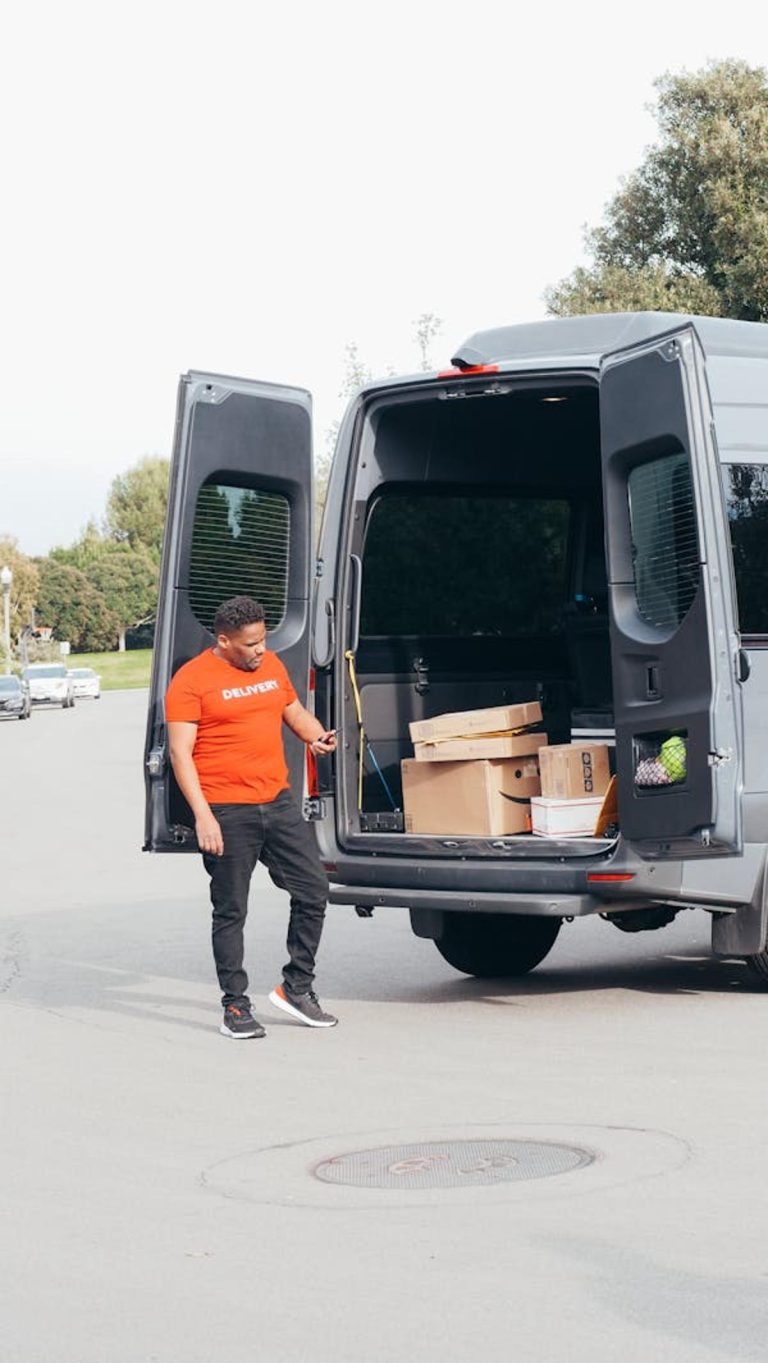As a small to medium-sized retail business owner, understanding the importance of efficient operations helps you to stay competitive. If you want the best for your retail store, you can consider using Third-party logistics (3PL) or In-house fulfillment. This can significantly impact your bottom line and customer satisfaction.
Selecting an effective fulfillment strategy is crucial for your retail business’s success. According to a report by McKinsey, companies that optimize their fulfillment strategies see a 10-15% reduction in costs and a 20-30% increase in customer satisfaction. In Nigeria, where the e-commerce market is projected to reach ₦2.4 trillion by 2025, choosing the right fulfillment strategy can give your retail business a competitive edge in the local market. With 3PL and in-house fulfillment offering distinct benefits and challenges, understanding these options is vital to making an informed decision that aligns with your business goals and objectives.
2. Understanding Third-Party Logistics (3PL)
As a small business owner, you’re likely looking for ways to optimize your retail operations. One solution to consider is Third-Party Logistics (3PL), an outsourced model where you entrust your warehousing, packing, and shipping operations to an external logistics provider.
3PL providers offer a range of services, including inventory management, order processing, warehousing, and last-mile delivery, allowing you to focus on growing your business. For instance, popular 3PL providers like GIG Logistics and Kwik Delivery in Nigeria provide local and international shipping options, making them a great fit for small to medium-sized retailers looking for the best for your retail store.
3. What is In-House Fulfillment?
As a small business owner, you may prefer to maintain control over your retail operations. In-house fulfillment allows you to do just that, managing all aspects of the fulfillment process internally, from storing inventory to packaging and delivering products.
With in-house fulfillment, you’ll oversee warehousing, staff order processing, and handle returns personally. This approach enables you to customize and personalize the customer experience, potentially leading to increased loyalty and satisfaction, making it a viable option to consider as the best for your retail store.
4. Pros and Cons of Third-Party Logistics (3PL)
As a small business owner, considering 3PL for your retail store involves weighing its advantages and disadvantages. Some of the pro are:
- Scalability: Easily adjust fulfillment capacity during peak times or growth periods.
- Reduced Overhead Costs: Save on warehousing, staffing, and equipment.
- Expertise and Efficiency: Benefit from specialized logistics expertise and optimized delivery routes.
- Focus on Core Business Activities: Free up time for sales, marketing, and growth.
Some of the Cons to look out for are:
- Loss of Control: Limited control over fulfillment may impact customer experience.
- Additional Costs for Customization: Extra fees for branded packaging or custom services.
- Dependence on Provider’s Reliability: Issues with 3PL providers directly impact your reputation.
For example, Jumia, a Nigerian online store, switched to 3PL to manage increased demand, allowing them to focus on expanding their business without logistics worries, making 3PL a viable option as the best for your retail store.

5. Pros and Cons of In-House Fulfillment
As a small business owner, managing fulfillment internally can offer several benefits, but also comes with challenges. For instance, Nigerian retailer, Konga, successfully handles in-house fulfillment, showcasing its potential. When considering in-house fulfillment, weigh the following Pros:
- Complete Control Over Operations: You oversee every aspect of order fulfillment, ensuring quality and accuracy. This control enables you to make changes quickly.
- Branding Opportunities: Personalized packaging and branded inserts enhance customer experience and build loyalty.
- Direct Customer Interaction: Handling inquiries and returns efficiently builds strong customer relationships.
While the Cons to look out for are:
- Higher Initial Investment: You’ll invest in storage, equipment, and staffing, requiring significant upfront costs. Ongoing expenses also add up.
- Scalability Challenges: Scaling during peak seasons or rapid growth can be difficult, potentially limiting your business expansion.
- Time and Resource Intensive: Managing logistics takes away from core business activities, diverting resources and attention.
Considering these points will help you decide if in-house fulfillment is the best for your retail store.
6. Key Factors to Consider When Choosing Between 3PL and In-House Fulfillment
When deciding between 3PL and in-house fulfillment, consider the following crucial factors to determine which option suits your retail store best:
- Business Size and Order Volume: Larger businesses or those with high order volumes may benefit from 3PL’s scalability and efficiency, while smaller businesses might find in-house fulfillment manageable.
- Budget and Financial Resources: In-house fulfillment requires initial capital investment, whereas 3PL offers a pay-as-you-go model, reducing upfront costs.
- Customer Expectations: If your customers expect rapid or customized delivery, 3PL may offer faster and more flexible options.
- Growth Projections and Scalability Needs: 3PL allows easy scalability, whereas in-house fulfillment may require additional investment for growth.
7. Cost Comparison: 3PL vs. In-House Fulfillment
When choosing between 3PL and in-house fulfillment, understanding the costs is crucial. For small businesses in Nigeria, like Jumia and Konga, evaluating expenses helps optimize logistics. In choosing the one for your business, you should Consider the following costs you will be handling:
- · In-House Fulfillment: Rent, warehousing, equipment expenses, Staff salaries, benefits, training, Packaging materials, and transportation
- · costs 3PL: Service fees, storage costs, Pick-and-pack, shipping, and potential customization fees
However, 3PL often offers better cost efficiency at higher order volumes. In Nigeria, warehousing costs (₦500,000 – ₦2 million/month) and staff salaries significantly impact in-house fulfillment expenses. Compare both options based on your average order volume to determine the most financially viable choice for your retail store.
8. Using Technology to Streamline Either Fulfillment Option
As a small business owner, leveraging technology is crucial to optimize your chosen fulfillment method. Whether you opt for 3PL or in-house fulfillment, technology can significantly enhance efficiency. Some of the following technological advancements you can consider are:
- Inventory Management Software: Tools like Lumi Business’ Inventory Management improve accuracy and efficiency in both in-house and 3PL fulfillment.
- Order Tracking and Customer Communication: Technology provides real-time order updates, enhancing customer experience and managing expectations.
- Analytics and Reporting: Data insights help manage inventory (in-house) or track order status and fulfillment speed (3PL).
9. Evaluating the Customer Experience Impact
Your fulfillment choice directly affects customer experience, influencing loyalty and retention. Nigerian retailers like Jumia and Konga prioritize customer satisfaction through efficient logistics. To get desired result the following customer experience factors you should look out for are:
- Speed and Reliability: 3PL providers often offer faster delivery options, while in-house fulfillment allows for personalized service.
- Branding Consistency: In-house fulfillment ensures better branding control, whereas 3PL may limit customization.
- Customer Service: In-house fulfillment provides control over returns and inquiries, while 3PL may introduce communication delays.
By evaluating these factors, you can choose a fulfillment method that enhances customer satisfaction and loyalty for your retail store.
10. Combining 3PL and In-House Fulfillment: A Hybrid Approach
For growing businesses, a hybrid fulfillment approach can offer the best of both worlds. By combining 3PL and in-house fulfillment, you can optimize logistics while maintaining personalized service. Consider handling high-value or custom items in-house, while leveraging 3PL for high-volume or distant orders. This hybrid approach provides flexibility without compromising service quality and Optimizes logistics costs and efficiency.
For instance, Bella’s Boutique, a Nigerian fashion retailer, successfully implemented a hybrid model. They handled high-end, customized orders in-house while partnering with a 3PL provider for bulk orders. This balanced personalized service with operational efficiency, enables Bella’s to scale while keeping high-value customers satisfied.
Ultimately, the best choice depends on your individual business needs and long-term objectives. By weighing the pros and cons of each option, you can make an informed decision that’s best for your retail store, driving efficiency, customer satisfaction, and long-term growth.
Now that you’ve considered the best fulfillment options for your retail store, take the next step to optimize your logistics. Explore Lumi Business’ inventory and order management tools to streamline your fulfillment process, whether you choose 3PL, in-house, or a hybrid approach. Discover what works best for your retail store and start growing your business today!
